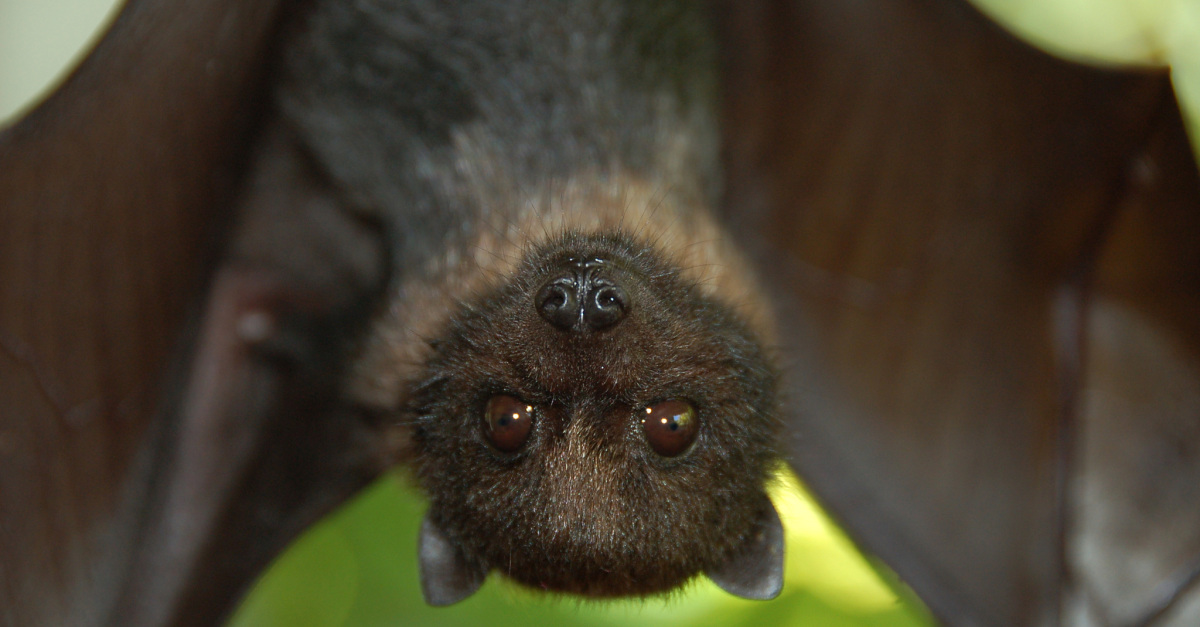Sonar, or SOund Navigation And Ranging, is a biological or man-made device that uses sound waves to detect objects, navigate, measure distances, or even communicate. For some animals, sonar is vital for their survival. Various animals use sonar to find their way in the dark, locate food, or avoid predators.
These animals often use sonar in the place of other senses, such as sight or smell. Without echolocation, these animals would not survive for long. They would not be able to find food, or they would be eaten by a predator or injure themselves by flying or swimming into solid objects.
You are reading: Top 10 Animals That Use Sonar To Survive
In this article, we will introduce you to the top 10 animals that use sonar or echolocation to survive, according to the search results. These animals include bats, dolphins, whales, porpoises, oilbirds, swiftlets, shrews, dormice, tenrecs, and rats.

Top 10 Animals That Use Sonar To Survive
Bats

Bats are one of the most well-known animals that use sonar, or echolocation, to navigate and find food in the dark. They produce sound waves at frequencies above human hearing, called ultrasound.
Bats can be broadly characterized by their echolocation calls as “shouters” and “whisperers.” Shouters, such as big brown bats and little brown bats, produce sounds of 110 decibels, similar to the loudness of a smoke alarm. Whisperers, like northern long-eared bats, produce sounds of 60 decibels, similar to the levels of normal human conversation.
To echolocate, bats send out sound waves from their mouth or nose. When these sound waves hit an object, they produce echoes that bounce off the object and return to the bats’ ears. Bats listen to these echoes to determine the object’s location, size, and shape.
Using echolocation, bats can detect objects as thin as a human hair in complete darkness and find insects the size of mosquitoes, which many bats like to eat.
Most bat echolocation occurs beyond the range of human hearing. Humans can hear from 20 Hz to 15-20 kHz, depending on age, while bat calls can range from 9 kHz to 200 kHz.
Bats’ ability to use echolocation allows them to find their way around quickly in total darkness, making them highly efficient hunters and navigators.
Dolphins

Dolphins are one of the most well-known animals that use echolocation, or sonar, to navigate and find food in the ocean. Echolocation is a process that permits dolphins to send out sound waves that, when they hit an object, are bounced back, allowing them to identify the location, shape, and size of such an object.
Dolphins produce directional, broadband clicks in sequence, and each click lasts about 50 to 128 microseconds. When the animal creates the “clicking” echolocation sounds, they are focused in a directional beam by the melon, a large fat deposit located in the forehead of toothed whales.
The echos that are reflected from food sources are received at the “acoustic window” area in the lower jaw. From there, the acoustic information is transmitted to the middle ear, and ultimately to the brain for interpretation.
Echolocation allows dolphins to “see” by interpreting the echoes of sound waves that bounce off of objects near them in the water. This gives dolphins the capacity to explore their environment three-dimensionally and aids in navigation and hunting in low light and low visibility environments.
Despite years of study, scientists still do not fully understand the complex mechanisms that allow dolphins to learn so much about their surroundings via echolocation.
Whales
Whales are a group of marine mammals that use echolocation, or sonar, to navigate and find food in the ocean. Toothed whales, such as dolphins and sperm whales, use echolocation to hunt their prey. They send out high-frequency clicks and listen for their echo as they bounce back from objects.
Echolocating whales, such as sperm whales, send out a series of clicks, then interpret the echoes these make when they bounce back from objects. This bio-sonar locates prey with great accuracy and provides a way for these whales to ‘view’ their world. Baleen whales, on the other hand, use low-frequency sound to communicate, sometimes over considerable distances.
Read more : Not Just Birds, Here Are Types Of Animals With Wings
Recent research suggests that they do this with their larynx – the ‘voice box’ in land mammals. Some baleen whales, such as male humpbacks, produce extremely complex ‘songs’.
A new research paper, published in BMC Biology, has examined the skulls of ancient and modern whales to find out more about when and why they developed the ability to echolocate and why it gave them such a unique head shape.
The study found that toothed whales developed asymmetric skulls to help with echolocation, and whales living in extreme environments, such as narwhals, belugas, river dolphins, and deep-diving sperm whales, rely on echolocation more than other whales and have even more strangely shaped heads.
Echolocation is extremely sensitive, and some scientists think it may provide toothed whales and dolphins with a three-dimensional view of the world. In water, light is scarce, but sound travels quickly. In such an environment, toothed whales such as belugas, sperm whales, and dolphins cannot rely on their vision alone to orient themselves and locate prey, but can use echolocation.
Echolocation works like radar in bats or like ultrasound. Sound waves, some of which have very high frequencies, are thought to be generated by vibration of the phonic lips, vocal cord-like membranes located in the nasal passages, below the blowhole.
A fatty cavity at the front of the head called the melon is then used like a soundbox. Some of the emitted sounds bounce off of obstacles and are thus returned to the animal. The hollow, fat-filled lower jaw receives the sounds, which then travel to the inner ear to be analyzed by the brain.
Porpoises
Porpoises, like dolphins and toothed whales, use echolocation to navigate and find food in the ocean. They emit clicks and listen for the echoes to determine the location, size, and shape of objects in their environment.
Harbor porpoise echolocation signals have a wavelength slightly larger than 1 cm and can be used to obtain good echoes from prey items of this or even smaller size, in other words very small fish. Porpoises have a built-in echo sounder that they can use for echolocating prey and for orientation.
When the clicks bounce off a fish or another item in the water, a faint echo returns. If the echo is audible to the porpoise, the delay time from the emitted click to the returning echo tells the porpoise the distance to the fish and, with its sensitive hearing, the porpoise can also determine the direction to the prey. Porpoises use echolocation to “see” with sound, allowing them to navigate and hunt in the ocean.
Oilbirds
Oilbirds are a type of bird that uses echolocation to navigate through dark caves where they roost during the day. Oilbirds emit a series of clicks that are audible to humans and ricochet off objects in their environment, allowing them to navigate in total darkness.
Unlike bats, which use short-wavelength ultrasound to detect tiny insects, oilbirds use clicks that are in the range that’s audible to humans as well as other animals. In addition to clicks used for echolocation, oilbirds also produce a variety of harsh screams while in their caves.
Entering a cave with a light especially provokes these raucous calls; they also may be heard as the birds prepare to emerge from a cave at dusk. Oilbirds are colonial cave nesters and need both caves to breed in and roost in frequently, and forest containing fruiting trees.
Swiftlets
Swiftlets are a type of bird that uses echolocation, or sonar, to navigate through dark caves where they roost during the day. Swiftlets emit clicking sounds at frequencies of 1,500 to 5,500 hertz, which are audible to the human ear. These clicks are emitted at a rate of about six per second. Swiftlets use echolocation to navigate in total darkness and to locate their nests.
The swiftlet’s echolocation signals are more congruent than those for oilbirds, even across recording conditions. Swiftlet clicks are composed of frequencies completely within the human auditory range, with most energy between 1 and 10 kHz. The swiftlets’ clicks are composed of frequencies completely within the human auditory range, with most energy between 1 and 10 kHz.
Swiftlets use their syringes to produce broadband click-type biosonar signals that allow them to nest in dark caves and tunnels, probably with less resolution than that of echolocating bats. Swiftlets have been shown to detect vertical rods down to 10 mm diameter and potentially even smaller, suggesting that they receive useful echo information via the higher frequency portions of their clicks, even though these components contain less energy.
Shrews
Shrews are small mole-like mammals that are classified in the order Eulipotyphla. Some shrews use echolocation, emitting sounds that produce sonar to help them navigate their world, much like bats.
However, much of the evidence appears anecdotal. An article in the journal Biology Letters found “shrew-like calls can indeed yield echo scenes useful for habitat assessment at close range.”. There isn’t evidence that this echolocation is used to find prey. Instead, shrews rely on their long, highly sensitive whiskers, also known as vibrissae, to hunt.
For example, the Etruscan shrew hunts in an environment where crickets are particularly abundant. It moves its whiskers constantly – a motion called, appropriately enough, whisking – until it brushes its prey. Then it strikes quickly and with great precision. The only terrestrial mammals known to echolocate are two genera (Sorex and Blarina) of shrews, the tenrecs of Madagascar, bats, and the solenodons.
These shrews emit series of ultrasonic squeaks. While it has been suggested that water shrews may use sonar or electroreception to locate prey underwater, all investigations into these claims have produced no supporting evidence.
Read more : The Top 10 Cutest Animals On Earth
However, studies suggest some of the high-frequency sounds made by shrews are used for echolocation to assist the shrew to move in its nearby surroundings.
Dormice
Dormice are small, nocturnal rodents that are known for their ability to hibernate, but they are also active and incredibly athletic creatures with an excellent ability to climb up obstacles such as trees and rocks to escape predators or hunt for food.
Dormice are one of only a small number of creatures able to use sound—in the form of sonar—to navigate their surroundings. New research published in the journal Science shows conclusively that they echolocate: the mice get a sense of their surroundings and navigate by sending out high-frequency squeaks, then listening for the echoes that bounce off nearby objects.
The tree-climbing Vietnamese pygmy dormouse seems to make ultrasonic calls to guide its motion, and if that’s confirmed, it would be the first arboreal mammal known to use echolocation.
However, there isn’t much evidence that dormice use echolocation to find prey. Instead, they rely on their remarkable sense of hearing to suss out sources of food and potential danger. The dormouse has various vocalizations to communicate with others, including whistles, shrieks, and chirps. It may also communicate through body language and scent.
Tenrecs
Tenrecs are small, insectivorous mammals that are only native to Madagascar. There are about thirty species of tenrecs, ranging in size from a few ounces to two pounds.
Tenrecs are in the family Tenrecidae, and they resemble hedgehogs, shrews, and moles, although they are unrelated and have their evolutionary track.
Tenrecs use tongue clicks for echolocation, and it is thought that they use this sonar as a means of finding food. Interestingly, tenrec echolocation seems to be instinctive, and it is not a learned behavior.
While tenrecs are one of the few animals that use echolocation, there isn’t much evidence that they use it to find prey. Instead, they rely on their sense of hearing and smell to locate food.
Some studies suggest that tenrecs communicate with ultrasonic frequencies, but it is not clear if they use echolocation for this purpose.
Rats
Rats are a common pest that can cause damage to homes and gardens. There are various methods to control rat populations, including the use of electronic rodent repellents. These devices emit high-frequency sounds that are supposed to irritate rats and drive them away. However, there is little data that these devices are effective in rodent control.
Rats and mice emit high-pitched sounds and may communicate using these sounds, and devices that use sound that humans can hear typically have no effect on the rodents. Sonic devices are also used to deter birds, but there is only temporary relief, if any. In fact, in areas with large populations of birds, birds have been observed roosting on top of sonic units.
While rats and mice can hear some sounds heard by humans, much of the rodents’ hearing range is above the human range, and this range outside of human hearing is called “ultrasonic”.
Therefore, ultrasonic devices are marketed as a solution to repel rats and mice. However, the effectiveness of these devices is questionable, and there is little scientific evidence to support their use.
FAQS
1. What is sonar, and why is it vital for some animals’ survival?
Sonar or SONAR is an acronym for the words “SOund Navigation And Ranging.” It allows an animal (or a man-made device like a submarine) to use sound waves to detect objects, navigate, measure distances, or even communicate. Various animals use sonar to find their way in the dark, locate food, or avoid predators. These animals often use sonar in the place of other senses, such as sight or smell. Without echolocation, these animals would not survive for long. They would not be able to find food, or they would be eaten by a predator or injure themselves by flying or swimming into solid objects.
2. What are some animals that use echolocation?
Many animals use echolocation, including bats, whales, dolphins, some birds like the oilbird and some swiftlets, some shrews, and the tenrec from Madagascar.
3. How do animals use echolocation?
Animals use echolocation by emitting sounds that bounce off objects in their environment. They listen for the echoes to determine the location, size, and shape of objects in their environment. This allows them to navigate and find food in the dark or low visibility environments.
4. Are ultrasonic devices effective in repelling rats and mice?
The effectiveness of ultrasonic devices in repelling rats and mice is questionable, and there is little scientific evidence to support their use. While rats and mice can hear some sounds heard by humans, much of the rodents’ hearing range is above the human range, and this range outside of human hearing is called “ultrasonic.” Therefore, ultrasonic devices are marketed as a solution to repel rats and mice. However, the effectiveness of these devices is questionable, and there is little scientific evidence to support their use.
5. What other animals might we discover that use sonar for survival?
Experiments with blind rats indicate that they may be able to learn to use sonar to navigate mazes. There may be others capable of such learned behavior, or those that use noises too low for us to hear. Only time will tell.
Source: https://petstutorial.com
Category: Animals










